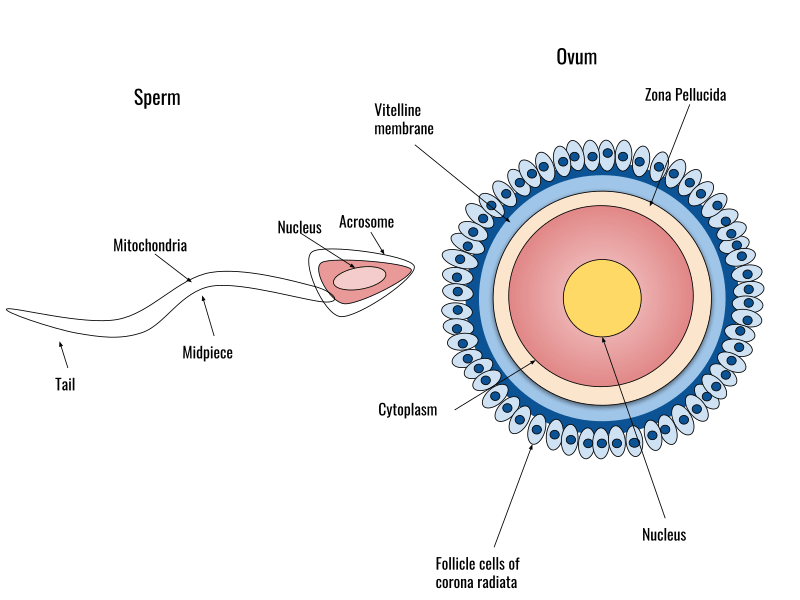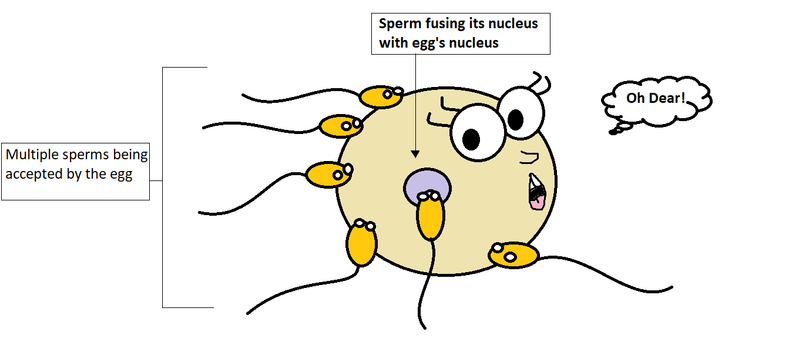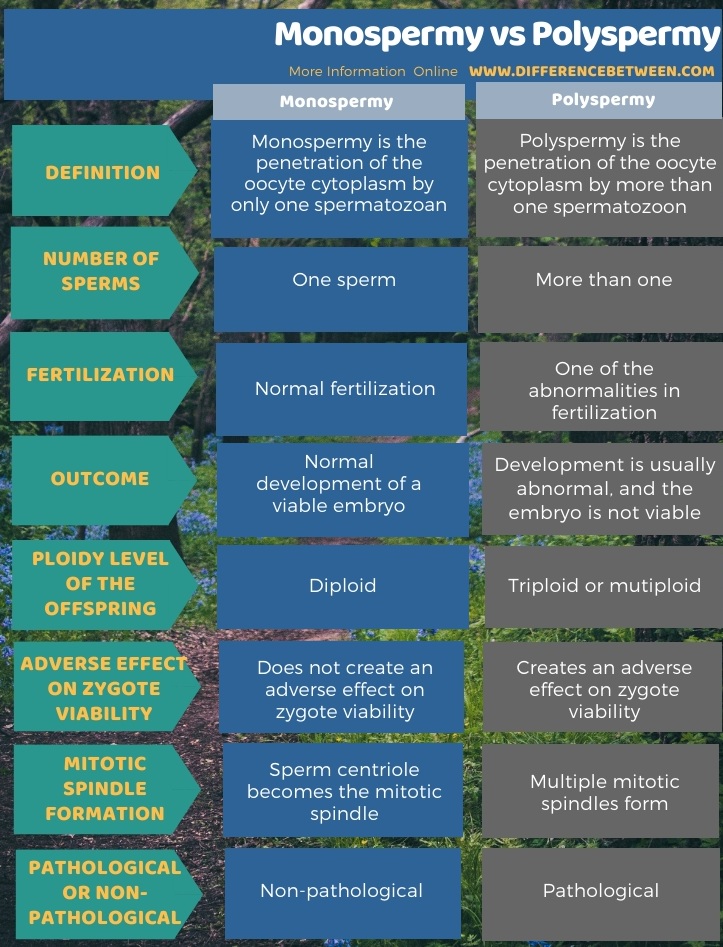Difference Between Monospermy and Polyspermy
The key difference between monospermy and polyspermy is that the monospermy refers to the normal process of fertilizing an egg cell with one sperm. Meanwhile, the polyspermy refers to the process of fertilizing an egg cell with more than one sperm.
Fertilization is the union of an egg cell with a sperm cell. It occurs during sexual reproduction. Normal fertilization involves an interaction between one sperm and one egg (monospermy). Hence, an egg allows only one sperm to fertilize it. However, there are occasions in which an egg cell becomes polyspermic by allowing additional sperms to enter the cytoplasm of the egg cell.
CONTENTS
1. Overview and Key Difference
2. What is Monospermy
3. What is Polyspermy
4. Similarities Between Monospermy and Polyspermy
5. Side by Side Comparison – Monospermy vs Polyspermy in Tabular Form
6. Summary
What is Monospermy?
Monospermy is the normal process of fertilization of an egg cell with a sperm. Thus, it involves only one egg cell and one sperm. Once a sperm enters the cytoplasm of the egg cell, it prevents entering of additional sperms by developing blocks on the zona pellucida and egg plasma membrane. By doing it, fertilization maintains the constant chromosome number in each generation.

Figure 01: Monospermy
Generally, gametes contain one set of chromosomes. When an egg and a sperm unite, it creates a diploid zygote containing the normal number of chromosomes of a vegetative cell.
What is Polyspermy?
Polyspermy is the fertilization of an egg with more than one sperm. This occurs when the egg cell allows more than one sperm to penetrate the cytoplasm of the egg cell. Thus, it creates a cell containing more than two sets of chromosomes. In simple words, polyspermy produces an organism that contains three or more sets of chromosomes; egg cell contributes one chromosome set while other chromosome sets come from the multiple sperms. Hence, most of the time, polyspermy is pathological. It produces an embryo which is abnormal and not viable.

Figure 02: Polyspermy
However, in some taxa, multiple sperm enter the egg with no apparent adverse effect on zygote viability. Moreover, approximately 7 % of fertilized human eggs are polyspermic.
What are the Similarities Between Monospermy and Polyspermy?
- Monospermy and polyspermy are two types of fertilization.
- In both types, an ovum unites with sperm.
What is the Difference Between Monospermy and Polyspermy?
Monospermy is the fertilization of an oocyte by a single spermatozoon. In contrast, polyspermy is the fertilization of an oocyte by more than one spermatozoan. So, this is the key difference between monospermy and polyspermy. Monospermy is the normal fertilization occurring in organisms while polyspermy is an abnormality in fertilization which produces a non-viable embryo.
Moreover, monospermy produces a diploid zygote while polyspermy produces a triploid or multiploid embryo. Therefore, this is also a significant difference between monospermy and polyspermy. Most importantly, monospermy is non-pathological while polyspermy is pathological due to having an abnormal number of chromosomes.

Summary – Monospermy vs Polyspermy
Monospermy and polyspermy are two types of fertilization. Monospermy is the normal fertilization which takes place between an egg and a sperm. Polyspermy is a type of abnormal fertilization in which an egg cell allows penetration of more than one sperm to its cytoplasm. Monospermy creates a diploid organism, while polyspermy creates a triploid or multiploid organism. Generally, polyspermy poses adverse effects on the embryo, and more often ,it produces a non-viable embryo. In contrast, monospermy produces a viable embryo, and it is non-pathological. Thus, this summarizes the difference between monospermy and polyspermy.
Reference:
1. Snook, Rhonda R, et al. “The Biology and Evolution of Polyspermy: Insights from Cellular and Functional Studies of Sperm and Centrosomal Behavior in the Fertilized Egg in: Reproduction Volume 142 Issue 6 (2011).” Reproduction, BioScientifica, 11 Aug. 2018, Available here.
Image Courtesy:
1. “The sperm and ovum during fertilization” By Atdoan0 – Own work (CC BY-SA 4.0) via Commons Wikimedia
2. “Physiological Polyspermy” By Tracey Chung – Own work (CC BY-SA 4.0) via Commons Wikimedia
ncG1vNJzZmivp6x7pbXFn5yrnZ6YsqOx07CcnqZemLyue8OinZ%2Bdopq7pLGMm5ytr5Wau265zqemrKiVp7q6ecCnm2aon6HGtLzEq6SyZw%3D%3D